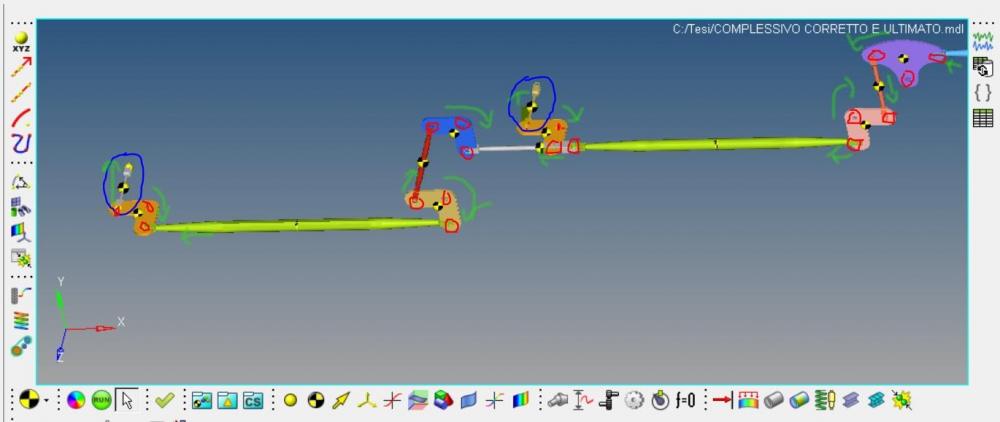Hi,
I have to simulate the kinematics of the line trasmission of the primary flight controls and I have many problems in choosing joints.
In this line, motion is given to elements circled in blue in the picture below.
In the picture, green lines define the motion, while nodes red circled are points where I have to insert joints.
Elements need to rotate around the three axis, but rotation around axis off element's plane is limited (8°).
Moreover, in elements with three points, the point in the middle is fixed and only rotation is possible. I tried to insert in those points revolute joints and in other points I tried ball joints but I didn't know how to limitate rotation up to 8° so I tried many joints but with poor results.
Consequently, I would like to ask you which joints could be good in the elements in the picture.
I thank you in advance.
<?xml version="1.0" encoding="UTF-8"?>